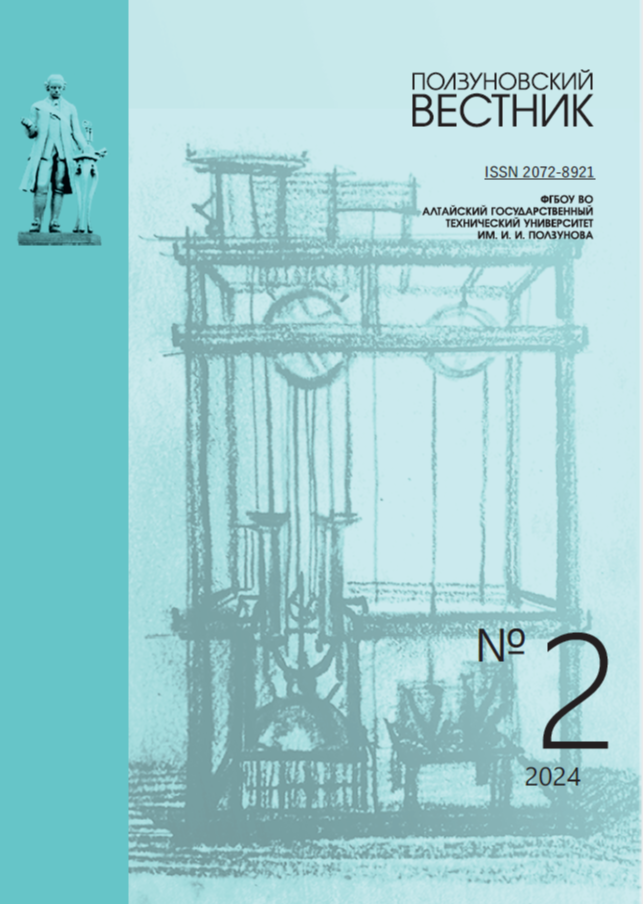OPTIMIZATION OF RUBBER WASTE RECYCLING PROCESS
JDFVHM
DOI:
https://doi.org/10.25712/ASTU.2072-8921.2024.02.032Keywords:
bitumen, crumb rubber, modification, processing, two-stage system, swelling, mixing, waste, acetone extraction, rheological properties, hydrocarbons, polymer materials.Abstract
The increased volume of rubber waste is a significant environmental problem. One approach to solving this problem is to use crumb rubber in the production of modified bitumen. Currently, modification technologies involve the use of polymer additives acting as reinforcing agents. However, the use of polymeric modifiers, which are products of the chemical industry, increases production costs. In contrast, crumb rubber, which is a by-product of mechanical rubber processing, serves as an economically advantageous resource. Temperature and time regimes and the number of steps in the process of bitumen modification using crumb rubber are poorly understood, giving rise to a multitude of opinions and production methods. This is a key factor that does not allow to effectively and fully replace the used polymers with crumb rubber in production. This paper presents an experimental study aimed at optimizing the process of using waste rubber in the modification of petroleum bitumen. The basis of the conducted experiment is the study of the degree of swelling of crumb rubber in bitumen by extraction with acetone. On the basis of analyzed parameters the efficiency of step-by-step preparation of modified bitumen is estimated. A two-stage technology including preliminary formation of bitumen-rubber composite to improve the rheological properties of the material is developed.
References
Ziari H. Characterization of rutting resistance of EBS-modified asphalt mixtures // Petroleum Science and Technology. 2016. № 13. P. 1107–1112. doi.org/10.1080/10916466.2016.1181655
Development of bio-based stabilizers and their effects on the performance of SBS-modified asphalt / L.T. Geng [et al.] // Construction and Building Materials, 2021. № 271. P. 8. doi.org/10.1016/ j.conbuildmat.2020.121889
Zhu J., Birgisson B., Kringos N. Polymer modification of bitumen: advances and challenges // European Polymer Journal. 2014. № 54. P. 18–38. doi.org/10.1016/j.eurpolymj.2014.02.005
McNally T., Polymer modified bitumen Properties and characterization. Woodhead publishing, 2011. 413 p.
Бурыкин Е.А. Методы производства модифицированного битума способствующие уменьшению негативного влияния на окружающую среду // Актуальные проблемы формирования здорового образа жизни студенческой молодежи: материалы ХIII Международной студенческой научно-практической конференции. Смоленск: филиал ФГБОУ ВО «НИУ «МЭИ», 2022. – С.225–227.
Бурыкин Е.А. Исследование влияния температуры приготовления модифицированного битума на его свойства // Информационные технологии, энергетика и экономика: материалы ХIХ Международной научно-технической конференции студентов и аспирантов. Смоленск: филиал ФГБОУ ВО «НИУ «МЭИ», 2022. – С.17–21.
ГОСТ Р 22245-90. Битумы нефтяные дорожные вязкие. Технические условия: введ. 1991-01-01. Москва, 2023, 9 с.
ГОСТ Р 8407-89. Сырье вторичное резиновое. Покрышки и камеры шин. Технические условия: введ. 1991-01-01. Москва, 2021, 7 с.
Бурыкин Е.А. Влияние резиновой крошки на свойства модифицированного битума // Энергетика, информатика, инновации: материалы XI Международной научно-технической конференции. Смоленск: филиал ФГБОУ ВО «НИУ «МЭИ», 2022. – С.7-10.
Бурыкин Е.А. Исследование влияния времени приготовления модифицированного битума на его свойства // Информационные технологии, энергетика и экономика: материалы ХIХ Международной научно-технической конференции студентов и аспирантов. Смоленск: филиал ФГБОУ ВО «НИУ «МЭИ», 2022. – С.21-24.
Lee S.J., Akisetty C.K., Amirkhanian S.N. The effect of crumb rubber modifier (CRM) on the performance properties of rubberized binders in HMA pavements // Construction and Building Materials. 2008. vol. 22. №7. P. 1368–1376. doi.org/10.1016/ j.conbuildmat.2007.04.010
Lo Presti D., Airey G., Partal P. Manufacturing terminal and field bitumen-tyre rubber blends: the importance of processing conditions // Procedia. 2012. vol. 53. P. 485–494. doi.org/10.1016/j.sbspro. 2012.09.899
Downloads
Published
How to Cite
Issue
Section
License
Copyright (c) 2024 Yevgeny A. Burykin

This work is licensed under a Creative Commons Attribution 4.0 International License.















 .
. This work is licensed under a
This work is licensed under a 
